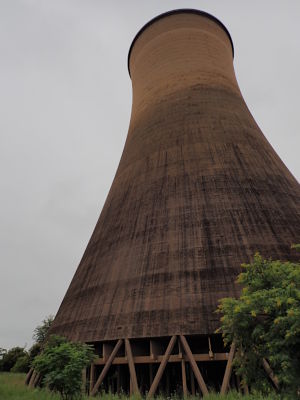The Legacy of Colenso Power Station: A Beacon of Progress in Early 20th Century South Africa
The early 20th century was a transformative era for South Africa, with rapid advancements in technology and infrastructure. Central to this progress was the monumental undertaking of electrifying the Durban-Johannesburg railway line, a crucial transport link connecting two major urban centers. The linchpin of this massive project was the Colenso Power Station, a coal-fired behemoth that played a pivotal role in South Africa's railway electrification.
Located in the quaint town of Colenso in KwaZulu-Natal, the Colenso Power Station began as a visionary project by the South African Railways and Harbours Administration. This entity, recognizing the need for a reliable electricity supply for its ambitious 'Natal Electrification Scheme', initiated the construction of the power station in 1921.
The construction spanned five years, culminating in 1926 with a sprawling facility that boasted five turbo alternators and eight boilers. With an impressive generation capacity of 60 MW, Colenso Power Station was able to electrify a vast stretch of the Durban-Johannesburg railway line, specifically the 274 km span between Glencoe and Pietermaritzburg. Such a feat was not only an immense accomplishment for South Africa but also positioned the country on the global stage; at the time, it was the second-largest railway electrification project worldwide.
Merely a year after its completion, in 1927, the custodianship of the power station transitioned from the Railway and Harbours Administration to the Electricity Supply Commission (ESCOM). Under ESCOM's management, the power station experienced a significant expansion phase, amplifying its generation capacity to an astounding 160 MW between 1944 and 1959.
However, the progress of technology is relentless. The 1960s heralded innovations in power generation that, while driving progress, also cast shadows on older infrastructures. Compared to the emerging technologies, the Colenso Power Station, once a paragon of modernity, began to show its age. Its once-impressive machinery became less efficient and economically viable in the face of newer and more advanced power plants.
Recognizing these challenges, ESCOM made the difficult decision to decommission the original section of the power station in 1970. This decision marked the beginning of the end for Colenso. Fifteen years later, in 1985, the remaining portions of the plant were also retired.
Today, the Colenso Power Station stands as a testament to South Africa's industrious spirit in the early 20th century. Its story, from its meteoric rise to its eventual decommissioning, is emblematic of the cycle of progress: relentless, transformative, and always looking to the future. While the station no longer hums with the energy it once generated, its legacy as a pivotal force in South Africa's railway electrification endures.

